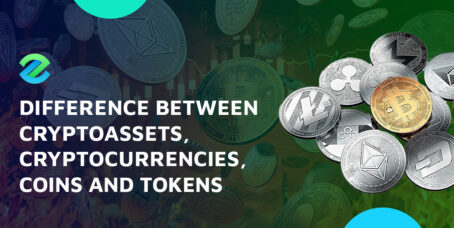The development of cryptocurrencies is a driving force of digital assets. The transparency and security of their foundation have become decisive factors that influenced the modernization of fundraising models for supporting new ideas in the crypto sphere. Anti-fraud and innovation have served as a valuable reason to improve and take fundraising efforts to the next level through creating reliable, secure, and decentralized launchpads.
Table of Contents
What is a crypto launchpad?
A launchpad is an online crowdfunding platform that newborn crypto projects use to raise capital to fund their next newly found idea from the public through selling tokens. Funds may be required for various purposes, such as developing a new product or service or finalizing an existing one.
Stages of fundraising for early stage crypto projects
Raising capital in the crypto market generally go through two major stages: the presale and public sale.
The presale launch precedes the public sale. It happens privately through a series of sale rounds, including seed, private and strategic, usually on an invite-only basis. Token buyers could include friends, family, relatives, accelerators, angel and institutional investors, and venture capitalists. These investors get in the earliest and have the most preferential token prices. Developers may use the funds of this stage to finish some products/services before the public launch.
After the presale, the project developers invite the general public to buy tokens through a launchpad on a centralized or decentralized crypto exchange or designated decentralized crowdfunding platform. Investors of this stage also get early access to the project but at higher price levels and with some restrictions after meeting the eligibility requirements.
History of fundraising models in the crypto market
In traditional markets, new companies raise capital from the public through a regulated process known as the Initial Public Offering (IPO). In 2017, early-stage crypto projects initiated a similar but unregulated fundraising model on their own platforms known as the Initial Coin Offering (ICO). This method was popular at the time, but later it proved to be unsafe and risky for investors, and hence it wore off.
As a result, centralized crypto exchanges (CEXs), such as Binance, introduced a new model of raising funds for new crypto projects through a process known as the Initial Exchange Offering (IEO). In theory, exchanges selectively pick and rigorously vet crypto projects before accepting their applications for raising funds to protect investors from fraudulent crypto projects.
However, crypto-centralized entities negate the principle of decentralization, the core foundation of cryptocurrencies. Hence, the crypto developer community introduced the Initial Decentralized Offering (IDO) offered by decentralized crypto exchanges (DEXs) and decentralized fundraising platforms (decentralized launchpads).
Suggested readings:
Examples of crowdfunding models
In the previous section, we explored the different models of crowdfunding, the most common of which are IDOs and IEOs. Let’s now give an example of each.
Example of IDOs
The following are DEXs that offer Initial DEX Offering or IDO services:
- Binance DEX
- Uniswap (DEX)
- Polkastarter (Both Dex and launchpad)
Examples of decentralized launchpads
The following launchpads or crowdfunding platforms offer Initial Decentralized Offering (IDO) services:
- BSCPad (Binance smart chain)
- Cardstarter (Cardona blockchain)
- Polystarter (Polystater blockchain)
Examples of centralized launchpads
The following are centralized exchanges that offer Initial Exchange Offering (IEO) services through their inhouse launchpads:
- Binance
- Kucoin
- Gate.io
Launchpads vs. Launchpools
launchpools serve a different purpose than launchpads. While crypto projects use launchpads to raise funds from early investors, launchpools are used to incentive early adopters to actively use and try out the project’s protocol or product and services. For doing so, users receive rewards in a process called the Initial Stake Offering (ISO). ISOs usually occur before IDOs or IEOs.
How does initial stake offering work?
A recent example of ISO is the Sundaeswap (ticker: SUNDAE), a decentralized crypto exchange built on the Cardona blockchain. Holders of the Cardano tokens (ADA) can delegate their tokens to specific stakepool operators, called SundaeSwap Scoopers, and in return, delegators receive rewards in SUNDAE tokens.
How to buy a new token on Launchpad?
The terms and conditions for participation in public sales may vary from one launchpad to another. For example, investors may need to:
- Register on the launchpad platform;
- Go through identity verification
- Connect a wallet
- Deposit or stake a minimum amount of the launchpad tokens
- Apply for participation in a token sale of a startup
- Complete marketing tasks
The token allocation may not be guaranteed even if you meet all the terms and conditions, as some launchpads use the lottery system for token distribution.
The launchpad selection process
Investors must pass the KYC/AML and meet specific requirements before participating in a public sale outlined on the launchpad website. New crypto projects also need to pass a multi-stage check, and only after vetting high-quality projects can they sell their tokens to the general public through the launchpad. This selection process creates a safe environment for both investors and early-stage crypto projects, given the reputation of the launchpad.
Pros and cons of launchpads
Launchpads come with many advantages for both crypto developers and investors alike. The founders receive the finances they need for development, and the community of early investors and supporters get exposure to new ideas at favorable prices with high-profit potential. Investors also look for a trusted platform with a high level of security, a strict vetting process, and equitable token distribution.
Launchpads have also become popular platforms for crypto developers for many reasons. They receive support from the platform, access many tools and services, and take advantage of the platform userbase. Launchpads create buzz around the project and draw the attention of a wide range of people. This way, they can focus on development instead of marketing.
However, this form of raising funds also has cons. Here are the main ones:
• Guaranteed allocations on most reputable launchpads require high deposit amounts. Therefore, the initial investment to obtain allocations can be a hurdle for most retail investors.
• Purchased launchpad tokens must be deposited and cannot be withdrawn for a certain period. While they are locked up, the price of the token may drop.
For crypto projects, launchpads could be an expensive way for raising capital, depending on the model used. However, the benefit may outweigh the cost.
Conclusion
Launchpads are a convenient interaction option between startups and investors to speed up the process of raising capital and make it more efficient. This form of crowdfunding creates a crypto community that would unite developers and potential investors, creating a win-win environment for all the stakeholders.
The invitation of Launchpads is yet another example of how blockchain technology is changing the business landscape and opening up new opportunities for making money.









